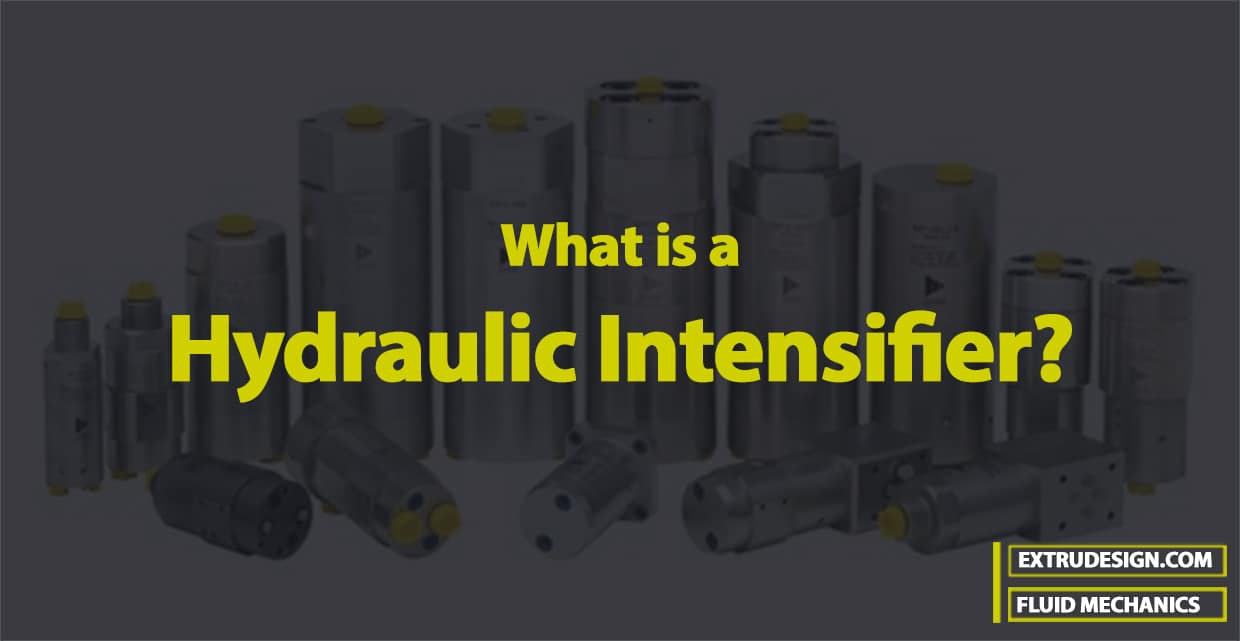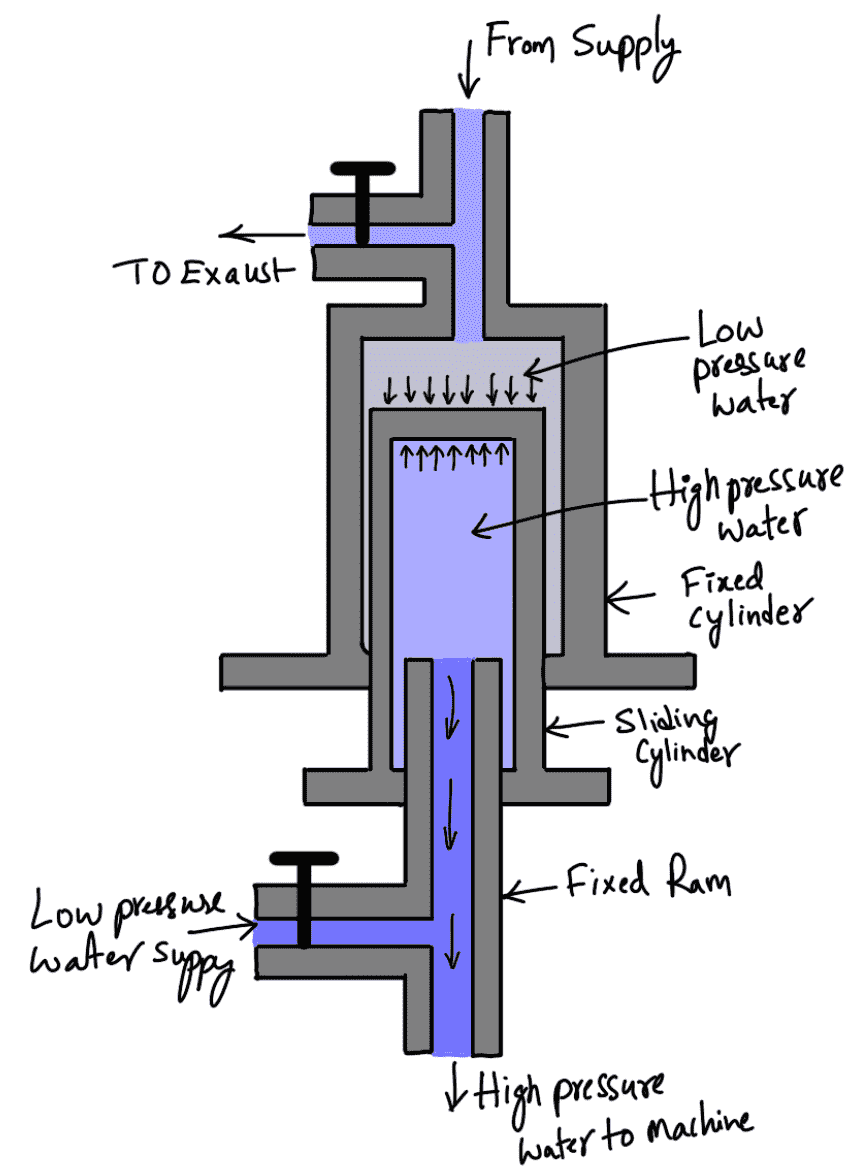The Hydraulic Intensifier is used to increase the intensity of pressure of water by means of hydraulic energy available from a large amount of water at low pressure for the hydraulic press. Let us discuss the construction and working principle of the Hydraulic Intensifier.

Fluid Systems
A fluid system is defined as a device in which power is transmitted with the help of a fluid which may be liquid (water or oil) or a gas (air) under pressure. Most of these devices are based on the principles of fluid statics and fluid kinematics. Following are the different devices that come under the Fluid systems.
- The hydraulic press
- The hydraulic accumulator
- The hydraulic intensifier
- The hydraulic ram
- The hydraulic lift
- The hydraulic crane
- The fluid or hydraulic coupling
- The fluid or hydraulic torque converter
- The Air Lift pump
- The gear-wheel pump
The device, which is used to increase the intensity of pressure of water by means of hydraulic energy available from a large amount of water at low pressure, is called the hydraulic intensifier. Such a device is needed when hydraulic machines such as hydraulic press require water at very high pressure which cannot be obtained from the main supply directly.
Hydraulic Intensifier
A hydraulic intensifier consists of a fixed ram through which the water, under high pressure, flows to the machine. A hollow inverted sliding cylinder, containing water under high pressure, is mounted over the fixed ram. The inverted sliding cylinder is surrounded by another fixed inverted cylinder which contains water from the main supply at low pressure as shown in the following figure.

A large quantity of water at low pressure from the supply enters the inverted fixed cylinder. The weight of this water pressure the sliding cylinder in the downward direction. The water in the sliding cylinder gets compressed due to the downward movement of the sliding cylinder and its pressure is thus increased. The high-pressure water is forced out of the sliding cylinder through the fixed ram, to the machine as shown in the above figure.
Let
p = Intensity of pressure of water from supply to the fixed cylinder (low-pressure water)
A = External area of the sliding cylinder
a = Area of the end of the fixed ram
p* = Intensity of the pressure of water in the sliding cylinder (high-pressure water).
The force exerted by low-pressure water on the sliding cylinder in the downward direction = p × A
The force exerted by the high-pressure water on the sliding cylinder in the upward direction = p* × a
Equating the upward and downward forces,
p × A = p* × a
p* = p × A / a
From this relation, we can calculate the Intensity of the pressure of water in the sliding cylinder.
Example Problem on Hydraulic Intensifier
Problem Statement: The diameters of the fixed ram and fixed cylinder of an intensifier are 8 cm and 20 cm respectively. If the pressure of the water supplied to the fixed cylinder is 300 N/cm2. find the pressure of the water flowing through the fixed ram.
Answer:
Given data
Diameter of the fixed Ram, d = 8cm
Area of fixed ram, a = π/4 d2 = π/4 82 = 16 π cm2
Diameter of the fixed cylinder D = 20cm
Area of fixed cylinder, A = π/4 d2 = π/4 202 = 100 π cm2
The intensity of supply pressure, p= 300 N/cm2
Let the intensity of pressure of water flowing through fixed ram is p*
From the above equation of Intensity of the pressure we have

The pressure of the water flowing through the fixed ram is 1875N/cm2.

Leave a Reply